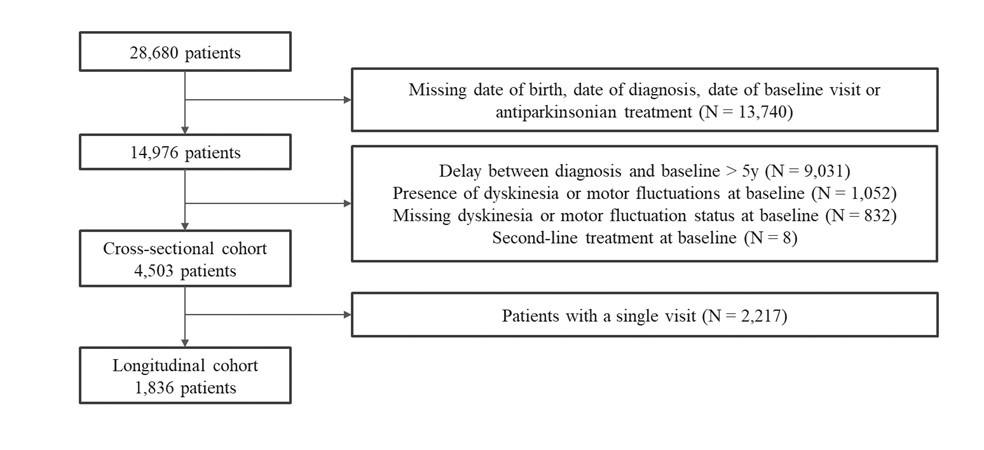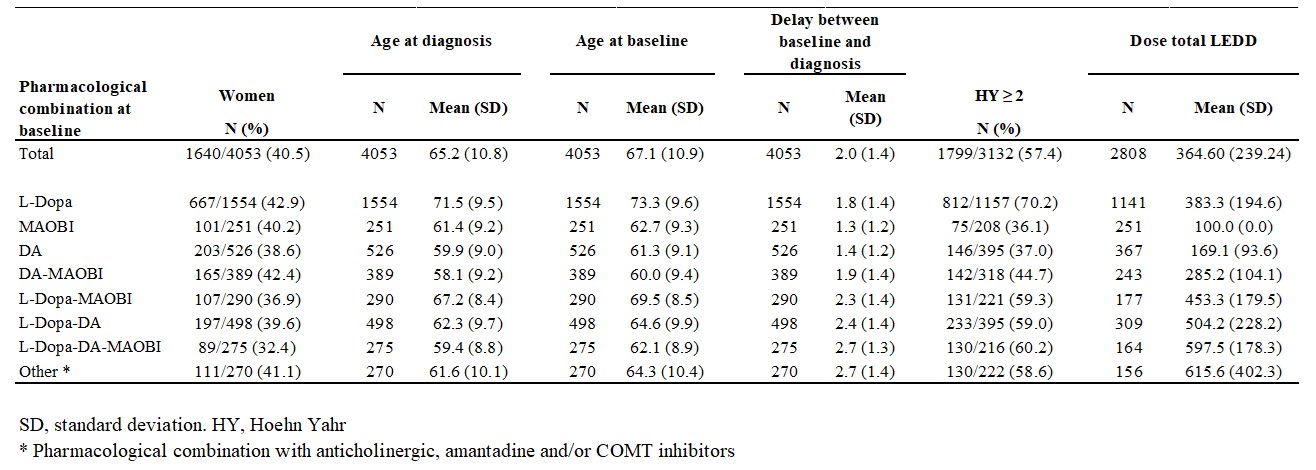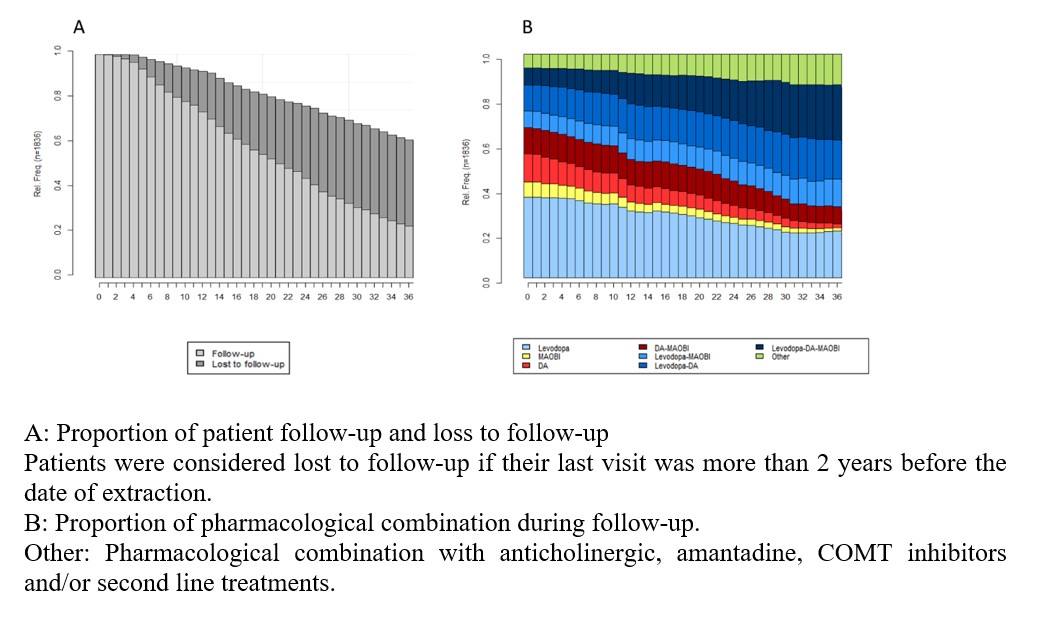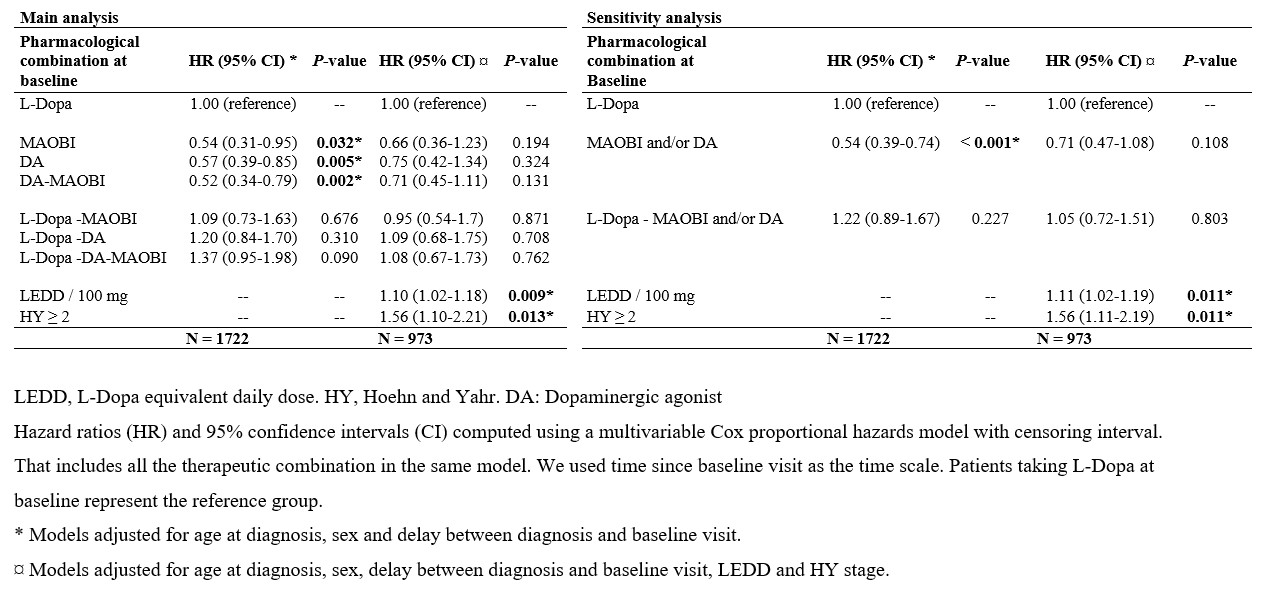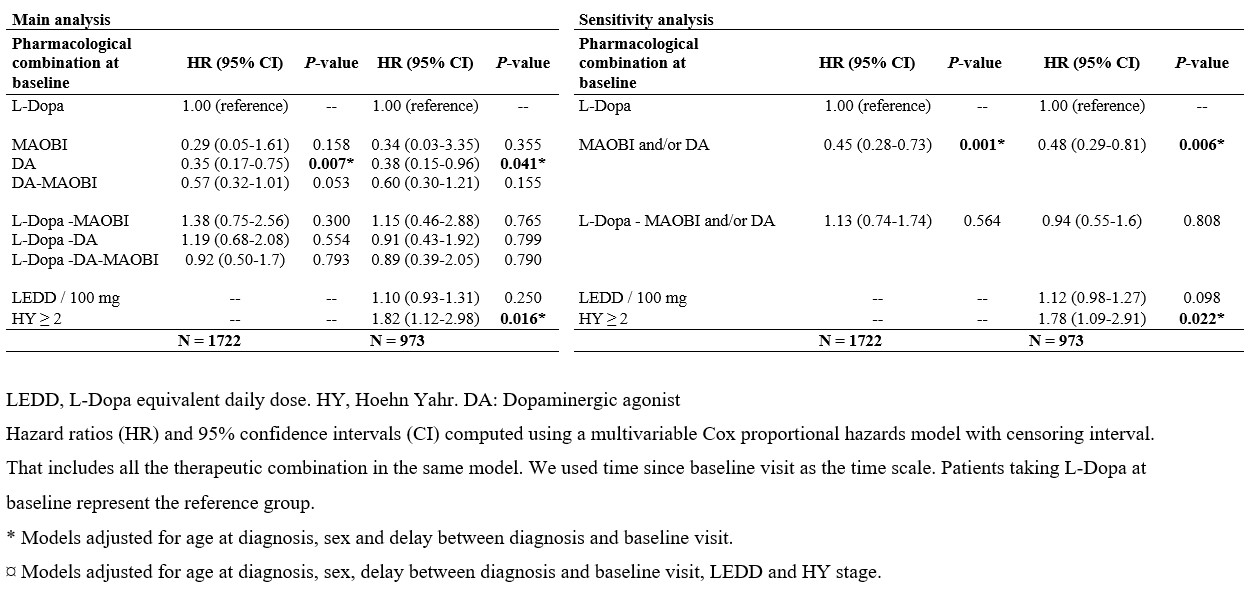Objective: To describe the different combinations of dopaminergic drugs at the early stage of Parkinson’s disease (PD) in a real-life cohort, and to determine their effects on the development of motor complications.
Background: Ldopa, dopamine agonists (DA), and MAOB inhibitors (MAOBI) are approved as the first line therapy in PD. The use of drug combinations in early PD in clinical practice and their effects on the development of motor complications are poorly known.
Method: We used data from 28,680 PD patients included between 2011 and 2021 in a prospective cohort conducted in 26 expert PD centers in France. Patients with a diagnosis < 5 years without motor complications at baseline were selected. For the cross-sectional analysis, patients with available data were included to describe the different drug combinations (Fig1). For the longitudinal analysis, patients with at least one visit of follow-up were included. Incidence of dyskinesia and motor fluctuations (MF) according to baseline PD drugs were analysed using an interval censoring method adjusted for sex, age, and delay between diagnosis and baseline, in a second step for LEDD and Hoehn and Yahr stage (HY).
Results: We included 4,053 patients in the cross-sectional analysis (Tab1). At baseline, patients were either treated with monotherapy (38.3% Ldopa, 13% DA, 6.2% MAOBI), bitherapies (12.3% DA+Ldopa, 7.2% MAOBI+Ldopa, 9.6% DA+MAOBI), or tritherapy (6.8% DA+MAOBI+Ldopa) (Tab1). Patients on Ldopa monotherapy were older (age at diagnosis 71.5y SD=9.5). Longitudinal analysis included 1,836 patients with a mean follow-up of 1.9y (SD=1.2) (Tab2-Fig2A). After 3 years, most patients (74.8%) had either Ldopa alone or in combination (Fig2B). Patient on MAOBI, DA, or DA+MAOBI had lower risk to develop MF than patient on Ldopa (respectively HR=0.54,P=.032; HR=0.57,P=.005; HR=0.52,P=.002)(Tab3). This association was not significant when adjusting for LEDD and HY, increased dose of LEDD being associated with a higher risk of MF (HR(100mg)=1.10,P =.009). Patients on DA had lower risk to develop dyskinesia (HR=0.35,P=.007), which remained significant after adjustment for LEDD and HY (HR=0.38,P=.041) (Tab4).
Conclusion: There is heterogeneity in drug combinations used in early PD, but most patients are on Ldopa after three years. The longitudinal analysis shows that drug combinations without Ldopa are associated with a lower risk of developing dyskinesias.
To cite this abstract in AMA style:
A. Lanore, E. Januel, N. Bertille, P. Menon, Y. Rajasegaram, S. Carvalho, LL. Mariani, M. Fabbri, O. Rascol, F. Tubach, Y. de Rycke, JC. Corvol. Pharmacological combinations in early stages of Parkinson’s disease and association with motor complications [abstract]. Mov Disord. 2023; 38 (suppl 1). https://www.mdsabstracts.org/abstract/pharmacological-combinations-in-early-stages-of-parkinsons-disease-and-association-with-motor-complications/. Accessed December 4, 2025.« Back to 2023 International Congress
MDS Abstracts - https://www.mdsabstracts.org/abstract/pharmacological-combinations-in-early-stages-of-parkinsons-disease-and-association-with-motor-complications/

